Buying a canoe, what is the best choice?
Earlier we wrote a post about the design of the canoe and what to look for when choosing a canoe. However, there is more to it when buying a canoe. In this post we want to give you an overview of the materials canoes are made of and how they influence the performance. But first some general thoughts about canoeing and the purchase of your first boat.
Your first canoe
For most people, buying a first canoe is like buying their first car. Above all it has to be stable and watertight. Size, shape, material, residual value and especially the intrinsic paddling properties are usually secondary to the price.
“Strength” is the major concern. Beginners are convinced that they will hit every rock in the river and that they will destroy their canoe in no time. So; “A strong boat becomes a good boat”. Even if it weighs a ton and wiggles through the water like a duck.
Properly learning to paddle to avoid obstacles is rarely considered. That is surprising because in other outdoor activities mastering a good technique is an essential part of the sport. Anyone who starts skiing or wall climbing doesn’t consider buying substandard and / or unsafe material. Let alone to start the sport without at least taking an initiation course (more about this in a next post).
Most people who buy skis or mountain bikes probably assume that they will grow with the sport (along with their equipment). Novice canoeists are often convinced that their first canoe will be their last — an axiom that only applies to people who never learn to love canoeing.
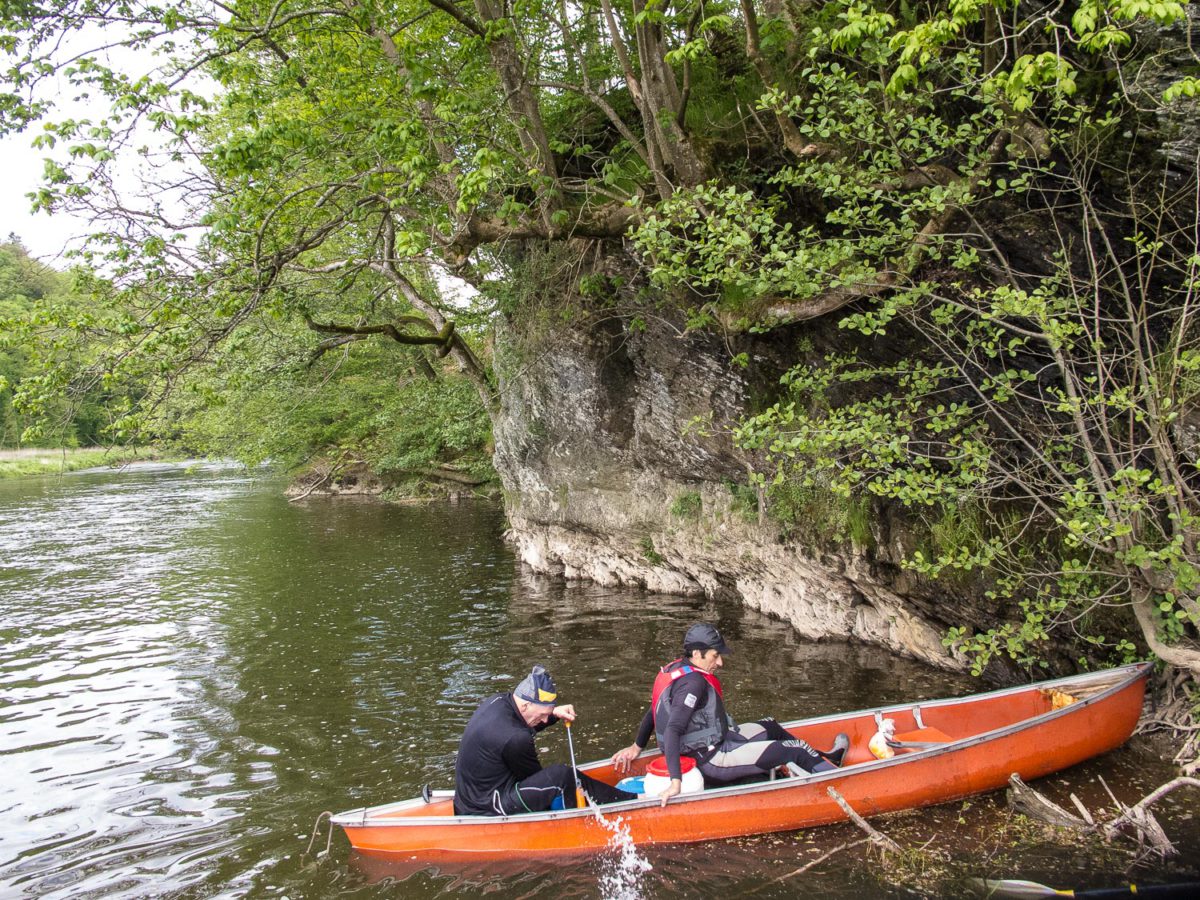
The love for canoeing slowly develops, even if you paddle with the perfect canoe. That early love can quickly change into ambivalence or hatred if the canoe is not responsive or just boring to paddle. Witness the large number of canoes that never leave the shed!
If you want to learn how to canoe and develop a love for the sport, you should first of all keep in mind what it was what attracted you in canoeing. And that was fun! Fun, that is what canoeing is all about!
Canoes are like cars. A family car brings you, with the necessary comfort, where you need to go but it will not ford a river or win races. Expedition canoes are fast and have a lot of loading capacity but they are uncomfortable or dangerous in rapids. River canoes excel in whitewater but are hard to keep on course on lakes. Recreational canoes are great for short trips but they are often not suitable for long trekkings. And so it goes on, in life you make choices! There is a lot to look at when buying a canoe and if you are really passionate about canoeing then one canoe will probably not be enough.
Buying a canoe, money matters!
Let us be honest, buying a canoe costs money. A good canoe costs between two to four thousand euros. Boats of five hundred euros are the Trabants of the paddle world. They look nice but the paddling comfort is often below zero. They follow the course of the water but not the path of the paddle. Before you spend your money, you should think very carefully about your investment. A good canoe will only increase your paddling pleasure over the years, a bad one does the opposite!
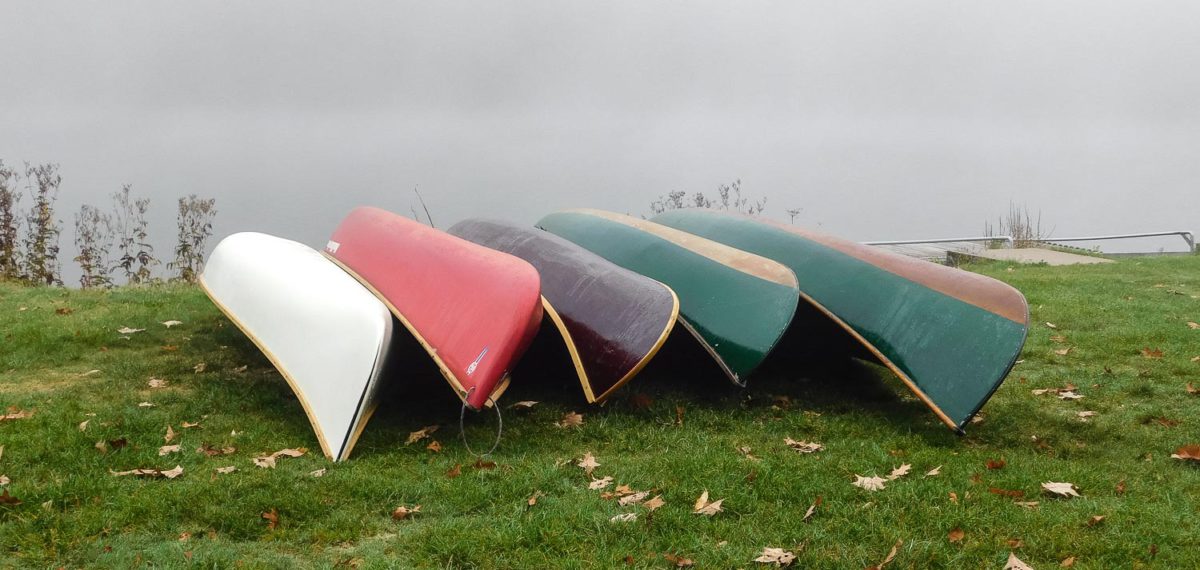
Buying a Canoe, which material?
Whether you buy your first canoe or want to expand your fleet, the decision on the material is always an important step in the selection process. Canoes are available in a wide range of materials and each has its advantages and disadvantages that make them suitable for specific paddling styles. White water canoes have to be made of more flexible, impact-resistant materials to withstand bumps or rocks. Flat water canoes have to be made of stiffer, lighter materials that glide faster over the water and can be portaged more easily.
ALUMINIUM
Speed 1.5 / 5
Durability 5/5
Weight 4/5
Maintenance 1/5
Costs 2.5 / 5
Once aluminum was considered the most advanced material in the construction of canoes, but the technological progress of the past decades has yielded many superior alternatives.
Aluminum canoes are constructed from two riveted sheets along the keel. They require very little maintenance and do not suffer from the UV rays of the sun. This makes them an excellent choice for rental companies.
Though aluminum is very durable, dented aluminum never takes its original shape and any holes need to be welded. Aluminum canoes are heavy, slow and noisy. They are cold to the touch in cold weather and can get very hot on the legs in the summer sun. They are not ideal for rocky rivers because aluminum does not slide over the rocks but sticks to them.

POLYETHYLENE
Speed 2 / 5
Durability 5/5
Weight 5/5
Maintenance 1/5
Costs 1 / 5
Most plastic canoes are made of polyethylene, a cheap plastic that can be thermally formed. This process is limited, however, and consequently polyethylene canoes are often wide and bulky with low speed and paddling efficiency. Without reinforcement, polyethylene lacks stiffness, which has a negative effect on speed.
Polyethylene canoes are cheap and relatively strong but very heavy and not suitable to carry on you own or for long portages. Polyethylene has a high impact resistance and easily slides over rocks. It requires very little maintenance but can hardly be repaired. They get damaged by long exposure to UV rays.
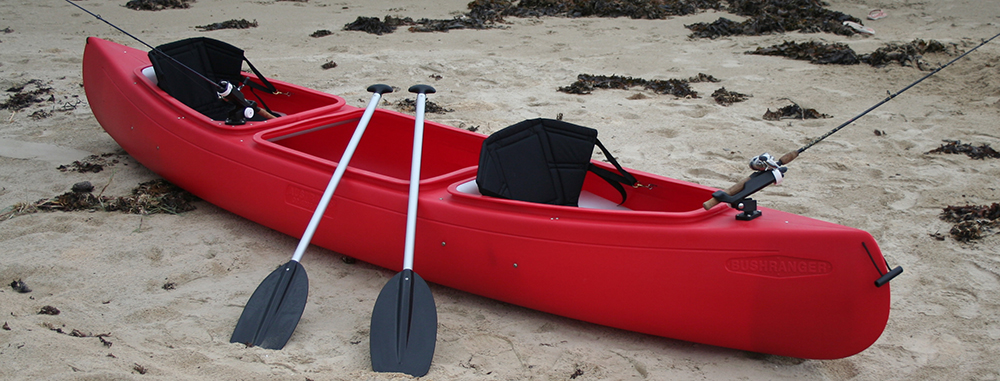
TUFFSTUFF, T-FORMEX
Speed 3.5/5
Durability 4.5/5
Weight 2.5/5
Maintenance 2.5/5
Costs 3/5
Royalex was the material for most canoe buyers for years. Lighter and stiffer than polyethylene and with more possibilities for variation in design. Royalex was essentially a plastic sandwich made of layers of vinyl, plastic and hard foam. The resulting canoes were exceptionally strong and durable. Unfortunately Royalex was produced in only one factory in Indiana. When Uniroyal was taken over by the international plastic company PolyOne in 2014, Royalex’s production was discontinued.
Nova Craft Canoes developed TuffStuff and Esquif T-formex in response to the disappearance of Royalex. Tuffstuff is made of a composite Basalt / Innegra cloth coated with impact-resistant vinylester resin. T-formex is a new plastic laminate that resembles Royalex. Both materials are incredibly durable. Nova Craft has had a lot of fun proving the solidity of Tuffstuff by jumping on canoes, hitting them with a sledgehammer and throwing them from a ten-story building
In addition to strength, both materials offer other advantages over conventional thermoformed plastic canoes. They are much stiffer which leads to greatly improved performance and efficiency. The materials are more hydrodynamic which results in a faster response. Finally, T-formex and TuffStuff are also lighter than conventional plastic.
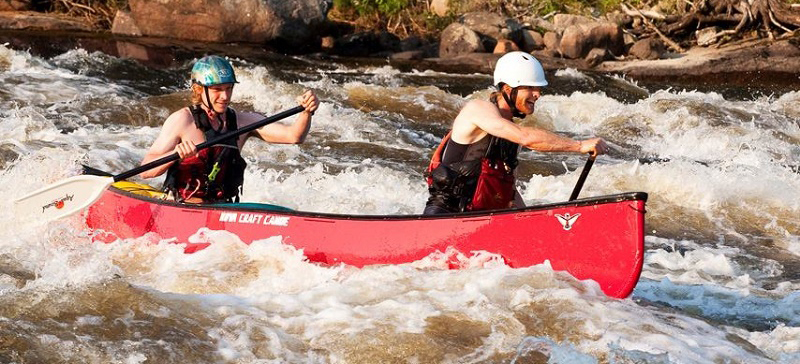
FIBERGLASS COMPOSITES
Speed 5/5
Durability 2/5
Weight 1/5
Maintenance 2/5
Costs 3/5
The term ‘composite’ is used when talking about canoes that are built with layers of cloth impregnated with resin such as epoxy or vinylester. They can be designed in virtually any shape imaginable and are usually layered by hand in a mold. Hardened the result is a rigid and lightweight canoe that is very strong.
Fiberglass composites usually have a gel coating that offers an extra level of abrasion resistance. That color-pigmented polyester resin is the first line of defense and can, after some time, require some maintenance if the layer gets scratched. Composite canoes are known for their stiffness and sharp entry and exit lines that offer high speed and efficiency.
In addition to strength, both materials offer other advantages over conventional thermoformed plastic canoes. They are much stiffer which leads to greatly improved performance and efficiency. The materials are more hydrodynamic which results in a faster response. Finally, T-formex and TuffStuff are also lighter than conventional plastic.
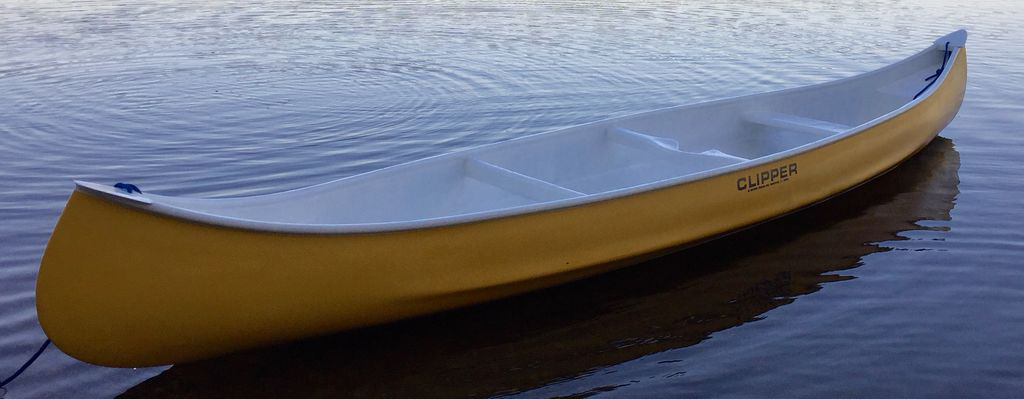
KEVLAR COMPOSITES
Speed 5/5
Durability 2/5
Weight 0.5/5
Maintenance 2/5
Costs 5/5
Kevlar fibers are stiffer and more impact resistant than glass fiber and have a higher tensile strength. This means that Kevlar canoes are stronger than glass fiber and about 25% lighter. Some Kevlar models have a colored gelcoat, like glass fiber models.
Kevlar canoes have the same qualities as glass fiber models and are perfect flat water boats with extremely high efficiency and very low weight. Because of their low weight, carrying and portaging is much easier.
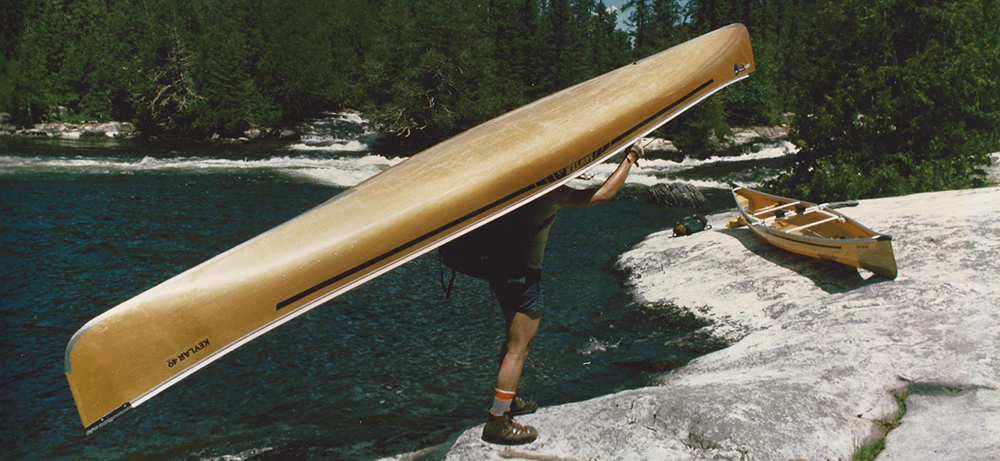
WOOD
Speed 5/5
Durability 4/5
Weight 1/5
Maintenance 3/5
Costs 5/5
In the past, all canoes were made of wood because it was the most available material. Contemporary wooden canoes pair this tradition with modern composite technology. The wooden shape of the canoe is covered with glass fabric or kevlar along the inside and outside. This results in very light and stiff canoes that paddle very efficiently and that last a lifetime if treated with the necessary love and care.
Wooden canoes are much stronger than most people think and if they get damaged they are easy to repair. I cannot emphasize enough what the real value is of a good cedar strip canoe.
A wooden canoe performs just as well as its kevlar counterpart. If you compare stiffness versus weight, wood is stiffer than Kevlar. Of course, wood is a natural product, it is soft and prone to rot. However, there is a simple solution for this. The layer of fiberglass and epoxy that sandwiches the wood provides protection against wear and moisture. This composite construction is one of the best ways to build a boat that is light, strong and durable.
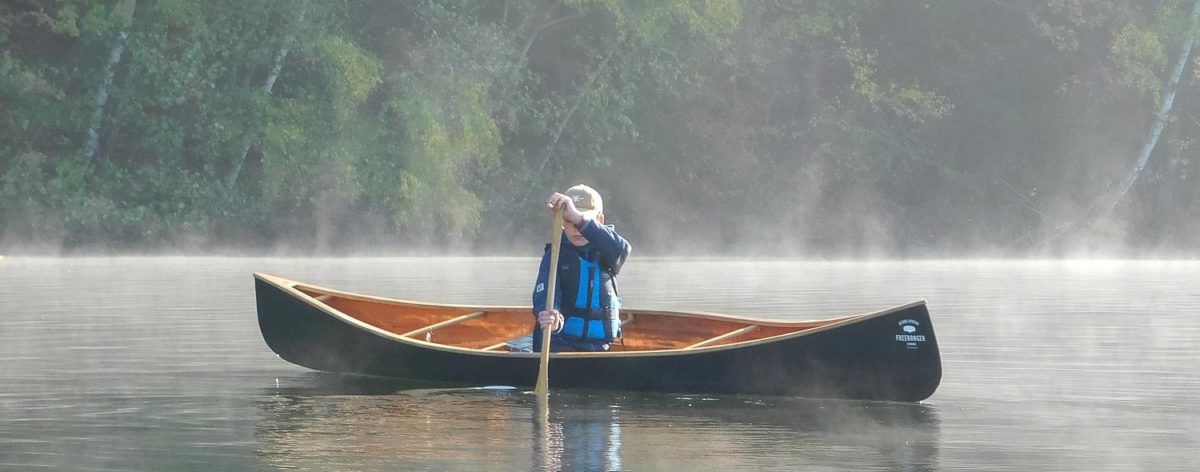
Buy a Canoe and have fun!
To conclude, do not exclusively think about “strength”. Canoes usually wear out due to prolonged use, not because they are folded around boulders. “Strength” or impact resistance are only important if you paddle whitewater and rapids and even then the value is overvalued. If your paddling skills are good, you will not hit rocks in most situations because the art of paddling is to avoid just that. As a beginner you start at the beginning: easy rivers with small rapids and a warm sun. The better you learn to paddle and the more fun you find in it, the more extreme the situations you will be looking for. But always choose a canoe that will make you happy every time you board it!

